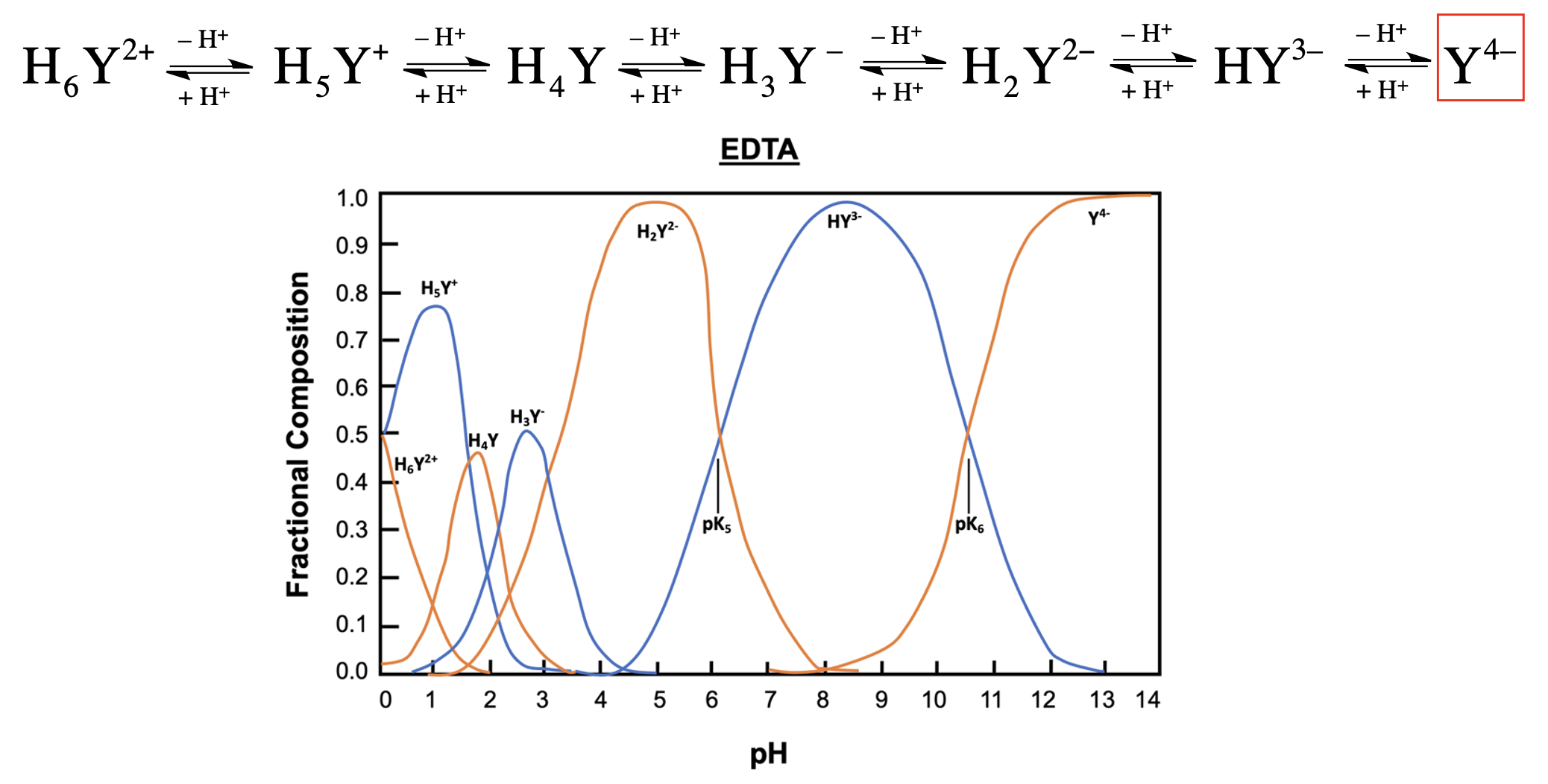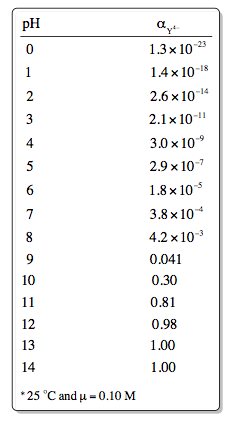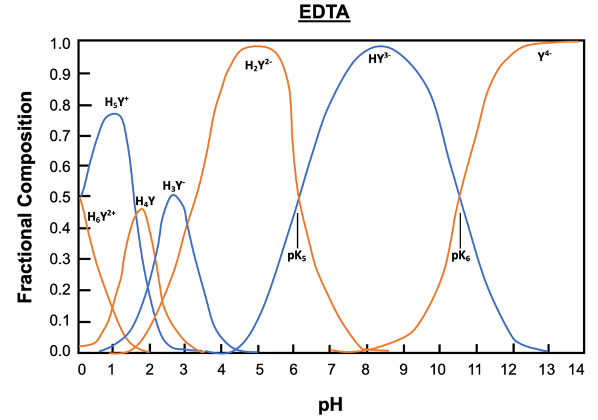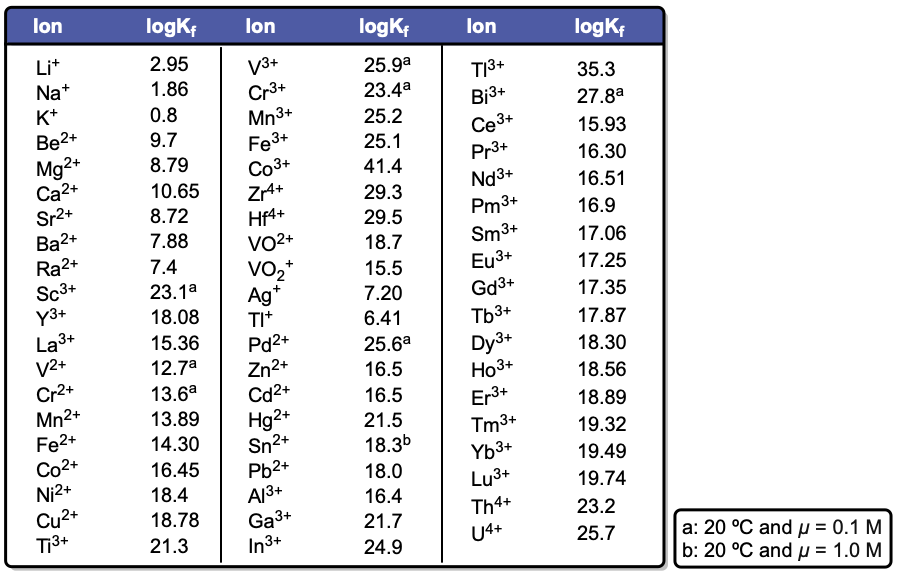Hey everyone. So in this video, we're going to take a look at EDTA. Here, we're going to say in its fully protonated form, EDTA exists as a hexaprotic acid. Here, it has the form of H6 because hexa means 6, protic means 6 protons, y2+. If we take a look here, we have the fully deprotonated form of EDTA.
That's why we have a charge of -four, so EDTA -four. Now, its form can change by the number of H+ it possesses. Okay, so that can increase or decrease depending on the pH of the solution. We're going to say here that remember for biological systems that carboxylic acids are considered strong organic or biological acids. They tend to have pKa values that are lower.
So, here we have a carboxylate group, another one, another one, and another one. Four carboxylate groups, which correspond to these 4 pKas. Then we're going to say that we have these 2 amine groups that can be protonated and therefore have their own pKa values. Those will result in these 2 higher pKas. Remember we've talked about this in the past that if your pH is greater than your pKa then that can result in deprotonation of a group.
And if your pH is less than your pKa then that can just be protonation. The environment is not basic enough to remove an H+ ion. So here the charge can change for EDTA based on the pH of the solution itself that it's submerged in. Now we're going to say in order to form metal complexes these acidic hydrogens must first be removed. We're going to say that EDTA can exist in up to 7 different forms depending on the pH of the solution.
So if we're taking a look here, we're going to say that this is considered the acidic form or fully protonated form. This exists when the pH of the solution is low enough, so it exists in an acidic environment. What we have here is we have basically the removal of protons or H+ over time as the pH of the solution increases. So we have 6 protons, 5, 4, 3, 2, 1, and then none. We're going to say that out of all these forms, this one here is the one that is neutral.
This neutral form is the one that's easiest to keep intact within a solution. So, if we want to transport EDTA over long periods of time submerged in a solution, we typically do it in its neutral form. We keep going and we get to this one here. This form here is our basic form. In this form, the pH is high enough that we've removed all the acidic protons from EDTA, so it exists in this EDTA form that we saw earlier.
We're going to say that this basic form is the ideal form when dealing with metal complexes. Now, if we take a look here at this graph, this graph is basically showing us at different pHs which of the 7 forms predominates. So we're going to say here that let's say for example here, a pH of 6, it aligns with this pKa of 5. This pKa of 5 means that we have kind of an equilibrium with one another, this form and this form of EDTA. At that pH of 6, we would say that we have an even split between them.
So 50% H2Y2- 50% HY3- At this point here, pKa 6, we're going to say that this is when our pH is around 10.37. We're going to say at that pH we have an equal amount of HY3- and the Basic form. Beyond that pH, so higher than 10.37, we'd have the basic form be the dominant or predominant form. Another piece of information that's good to know from this graph is that we can see that below a pH of 3, we can see that 4 of the 7 forms exist. So these are the forms that exist.
So basically, they exist when the environment is a pre-acidic pH of 3 and lower. Now, we can say to calculate the fraction of EDTA in its basic form we can utilize the following equation. So here we have basically the fraction and sub of the basic form equals the concentration of the basic form divided by the concentration of EDTA. So here that would equal the concentration of my basic form. When we say here the concentration of EDTA, we're talking about the concentration of all 7 forms.
Now here this can be expanded further into this lower equation. This lower equation, when we have the fraction of our basic form, is used when the pH of a solution, is given, and we're asked to find the fraction of the basic form because as you can see here, we have concentrations of H+ involved throughout the equation. And remember that if you know pH, you know H+ because H+=10-pH. And we can see also that we have Ka values being involved in this equation. We also know what our Ka values are because remember that Ka equals 10-pKa.
So when it comes to EDTA, it has a lot of different forms, and those forms are determinant on the pH of the solution in which our EDTA structure is submerged. Remember, the basic form is the best form when it comes to dealing with metal complexes themselves.









